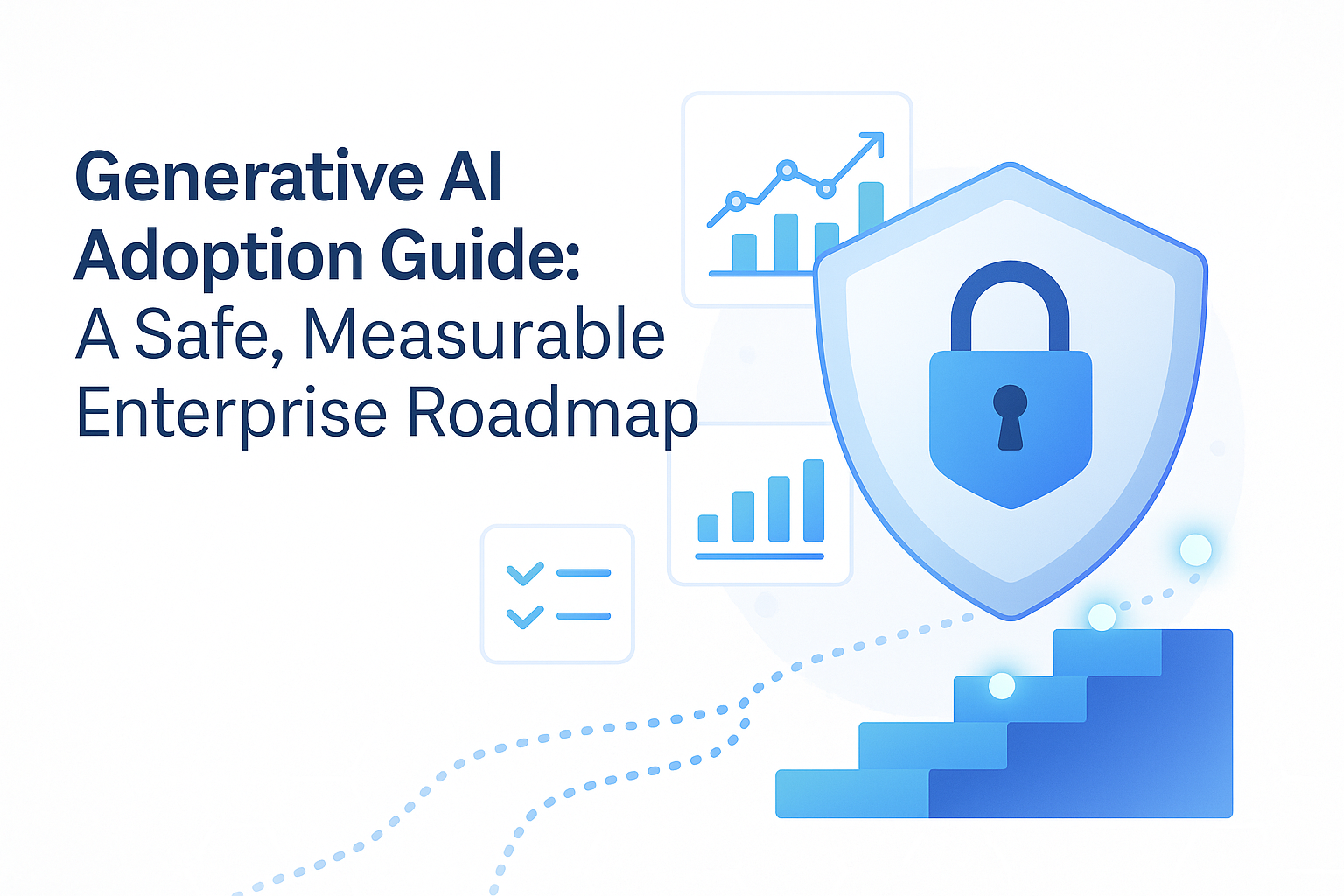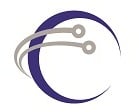
Introduction
GenAI delivers when you pair a business-first roadmap with governance and platform guardrails. Start small, align to NIST AI RMF + Generative AI Profile, pick a platform fit (Google Vertex AI, Azure OpenAI/AI Foundry, Amazon Bedrock, Databricks Mosaic AI, Snowflake Cortex, Salesforce Einstein Trust Layer, Informatica IDMC + CLAIRE Agents), instrument LLMOps/FinOps, and measure outcomes from day one.
IT leaders and data executives in North America who are moving from pilots to production-grade generative AI across analytics, applications, and operations—while keeping security, privacy, cost, and compliance under control.
GenAI is transforming knowledge work, but programs that win align governance and measurable value. Use NIST’s AI Risk Management Framework (AI RMF) and its Generative AI Profile to identify risks (privacy leakage, hallucination, bias, IP), choose mitigations, and standardize reviews—then scale only where value is demonstrated.
A pragmatic enterprise genAI roadmap (6 stages)
1) Align on business value
- Pick 2–3 high-leverage use cases (document intelligence, support copilot, code assistant, analytics copilot).
- Define acceptance metrics (cycle time, deflection rate, grounded accuracy, cost per task).
- Assign a product owner and risk steward for each initiative.
2) Put governance first (NIST-aligned)
- Map risks using NIST AI RMF + GenAI Profile.
- Decide human-in-the-loop checkpoints (review/approve/escalate).
- Implement guardrails: safety filters, PII redaction, content policies, audit logging.
3) Pick a platform fit for your data & skills
-
Google Vertex AI (Gemini): strong agent tooling, model evaluation, and search/grounding—great for Google-centric analytics/search estates.
-
Azure OpenAI / Azure AI Foundry: tight Microsoft integration, enterprise auth, Azure governance; ideal for Microsoft-centric estates.
-
Amazon Bedrock: broad model choice (Anthropic, Cohere, Mistral, Amazon) with AWS guardrails/observability.
-
Databricks Mosaic AI: LLMOps on your lakehouse (evaluation, gateway, monitoring); best when data + ML already live on Databricks.
-
Snowflake Cortex (Analyst/Agents): natural-language analytics and agent patterns directly over governed Snowflake data.
-
Salesforce Einstein Trust Layer: AI embedded in CRM + Data Cloud with grounding and Trust Layer (zero data retention, PII controls, policy enforcement)—best when GTM workflows and customer data live in Salesforce.
-
Informatica IDMC + CLAIRE (Agents): enterprise data integration, quality, and governance; CLAIRE Agents to operationalize “AI-ready data” across multi-cloud—great when you need DQ/governance before prompts ever execute.
Tip: Select 1–2 primaries that match your estate and skills; integrate others later via APIs.
4) Build with retrieval + controls
- Start with RAG (retrieval-augmented generation) over governed data (vector search, citations, fallback answers).
- Adopt policy-as-code for masking, retention, and usage limits; enforce per tenant/domain.
- Instrument observability (input/output logging, red-team results, drift) and FinOps (budgets, anomaly alerts).
- If customer data and processes live in Salesforce, leverage Einstein Trust Layer for grounding and zero data retention; for upstream data prep and policy pushdown across sources, use Informatica IDMC + CLAIRE Agents so prompts hit trusted, policy-compliant data.
5) Prove it—then scale
- Run a 30–60 day pilot with explicit KPIs (below).
- Use platform evaluation tooling (A/B prompts, golden sets, red-team suites).
- Decide: stop, refine, or scale by use case and business impact.
6) Operate as a product, not a project
- Stand up a small GenAI CoE for patterns, safety testing, and vendor selection.
- Publish golden templates (prompt patterns, RAG configs, evaluation suites).
- Quarterly posture reviews: cost, incidents, model updates, data contract changes.
Activities
-
Governance (NIST-aligned): Create a lightweight risk register (privacy, hallucination, bias, IP) and define human-in-the-loop checkpoints and escalation paths.
-
Platform setup: Provision your primary platform (e.g., Vertex AI, Azure OpenAI/AI Foundry, Amazon Bedrock, Databricks Mosaic AI, Snowflake Cortex). Enable org SSO, private networking, logging, and key management.
-
Data controls: Connect one governed dataset for RAG. If customer data is in Salesforce, enable Einstein Trust Layer (grounding, zero-data-retention). Use Informatica IDMC + CLAIRE to automate PII detection, DQ checks, and policy pushdown before prompts run.
-
Observability & FinOps: Turn on request/response logging, red-team capture, evaluation telemetry; set per-project budgets and anomaly alerts.
-
Pilot build: Implement a single use case (e.g., document intelligence or support copilot). Add citations, fallback answers, and safe-reply templates.
-
Evaluation: Create a golden set (typical + edge prompts), run A/B prompts/tools, capture grounded accuracy and cost per task.
- Grounded accuracy ≥ X%, human acceptance ≥ Y%, cost per task ≤ $Z, zero critical policy violations.
- Risk register approved; rollback defined; pilot user feedback collected.
- Secured genAI workspace, risk register, golden eval set, pilot MVP, cost dashboard, decision memo (stop/refine/scale).
Activities
-
Patternization: Publish golden templates (prompt patterns, RAG configs, retrieval evaluators, safe-reply library), reusable tool/action definitions.
-
Second/Third use case: Build another agent/copilot (e.g., analytics copilot in Snowflake Cortex or a code assistant on Databricks Mosaic AI).
-
Data expansion: Onboard 2–3 additional governed sources; standardize entity resolution and vector indexing.
-
Governance hardening: Automate policy-as-code (masking, retention, usage limits); expand red-team scenarios; introduce model cards and prompt change logs.
-
Ops maturity: Add SLOs (latency, grounded accuracy, cost/task). Enable alerting for policy blocks, PII detections, budget breaches.
-
Integration: If GTM workflows are in Salesforce, wire Einstein 1 Copilot/Agent flows to hand off tasks; continue upstream DQ/governance via Informatica IDMC.
- Two pilots meeting SLOs + cost targets, reproducible via templates; no P1 policy incidents; documented run-cost predictability (variance within target).
Deliverables
- Reusable templates & libraries, additional pilot(s), expanded risk register, SLO dashboard, updated budget & anomaly rules.
Days 61–90 — Productionization & CoE (operate as a product)
Activities
-
Production hardening: Blue/green rollout, rate limiting, quota tiers, feature flags, autoscaling. Formal rollback and DR tests.
-
Data lifecycle: Define retention, re-index cadence, lineage links; automate PII audits and DQ checks (via Informatica CLAIRE where applicable).
-
CoE standing team: Name owners for product, risk, platform, and cost. Establish intake/review, model updates, and deprecation process.
-
Vendor mix & portability: Document when to use Vertex/Azure/Bedrock/Mosaic/Cortex/Einstein 1; capture portability patterns (gateways, abstraction layers).
-
Quarterly posture review plan: Incidents, eval scores, cost trends, model updates, data-contract changes; publish improvement backlog.
- At least one production use case with SLOs, on-call runbook, and monthly cost predictability; CoE charter approved; backlog prioritized for next 90 days.
Deliverables
- Production runbook & on-call guide, CoE charter + RACI, quarterly review template, roadmap for next 2–3 use cases.
- Cycle time reduction (e.g., time to draft response ↓)
- Quality (grounded answer %, citation rate, human acceptance %)
- Cost per task (per-call/model spend, infra) — FinOps view
- Risk (PII violations blocked, policy rejects, escalation rate)
- Adoption (weekly active users, assisted tasks per user)
- Pilot sprawl without governance: Start with NIST-aligned risks + human-in-the-loop.
- Choosing on hype, not fit: Match platforms to your data gravity and team skills.
- No evaluation loop: Use built-in evaluation/monitoring; red-team early and often.
- Underestimating operations: Put LLMOps/FinOps/observability in place from day one.
- Data quality after the fact: Push DQ/governance upstream (e.g., with Informatica) so prompts hit trusted data.
References (official docs & hubs)
-
NIST AI Risk Management Framework: Click Here
-
NIST Generative AI Profile: Click Here
-
Google Vertex AI (Gemini): Click Here
-
Azure OpenAI / Azure AI Foundry: Click Here
-
Amazon Bedrock: Click Here
-
Databricks Mosaic AI: Click Here
-
Snowflake Cortex: Click Here
-
Salesforce Einstein 1 & Trust Layer: Click Here
-
Informatica IDMC + CLAIRE: Click Here

Blog Post by PDI Marketing Team
Pacific Data Integrators Offers Unique Data Solutions Leveraging AI/ML, Large Language Models (Open AI: GPT-4, Meta: Llama2, Databricks: Dolly), Cloud, Data Management and Analytics Technologies, Helping Leading Organizations Solve Their Critical Business Challenges, Drive Data Driven Insights, Improve Decision-Making, and Achieve Business Objectives.




